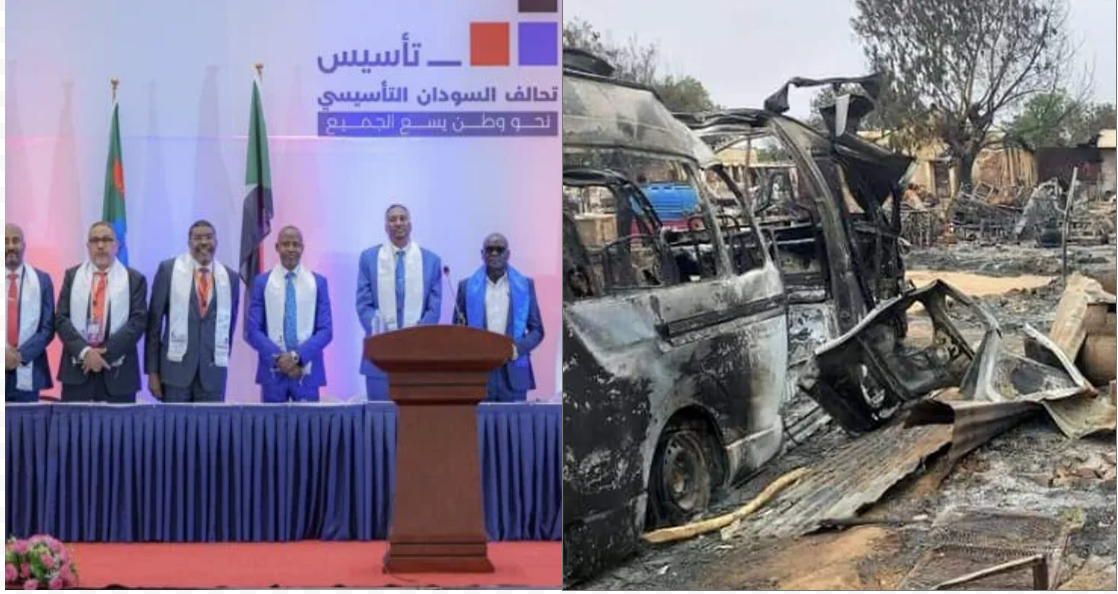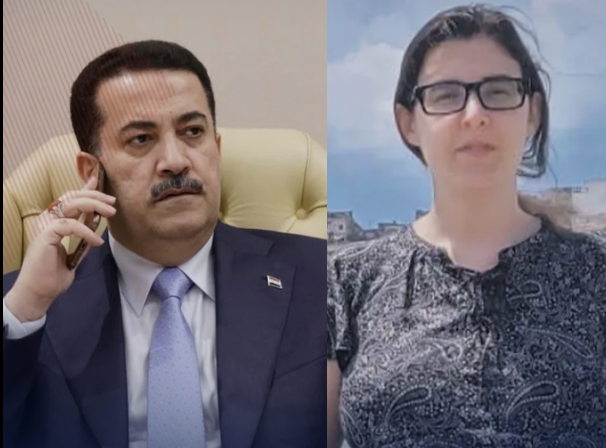
Saudi Arabia and the UAE in al-Mahra: Securing Interests, Disrupting Local Order, and Shaping a Southern Military
Saudi Arabia and the UAE in al-Mahra: Securing Interests, Disrupting Local Order, and Shaping a Southern Military
The ongoing war in Yemen has wreaked havoc on much of the country, crumbling centuries old buildings, destroying critical infrastructure and leaving countless civilians dead. Fighting has extended to many corners of the country. Some areas, however, have managed to avoid the brunt of the war, mostly by virtue of their isolation and sparse population rather than a lack of strategic importance. One such place is Yemen’s easternmost governorate, al-Mahra. Al-Mahra is second only to the governorate of Hadramawt in terms of size and runs the entire length of the border with Oman, from the Arabian Sea to Saudi Arabia’s southern border. Its size and geographic position along the border of both Saudi Arabia and Oman make the governorate a sought-after zone of control not only during the war but also whenever hostilities do subside. As such, al-Mahra is quickly becoming the site of a power struggle over the provision of security in the region, raising further questions as to the longer-term implications surrounding Saudi and Emirati interests and the proliferation of UAE-trained security forces.
Saudi and Emirati Involvement and Interests in al-Mahra
Al-Mahra has the fortune of being far from the Houthi’s heartland, allowing it to escape Houthi occupation and subsequent bombardment by Saudi Arabia. The governorate has largely been spared violence at the hands of al-Qaeda in the Arabian Peninsula (AQAP) and Islamic State (IS). Although both groups do have operatives in the region, radicalism has not historically been a problem in al-Mahra, and violent incidents have generally been rare. However, the divergent interests of local tribes, Saudi Arabia, and the UAE have created a combustible environment that threatens to upset the local balance.
Between 2015 and late 2017, Mahra was primarily controlled by the Yemeni military’s 123rd and 137th Mechanized Brigades, which are comprised largely of northern soldiers and supporters of Islah, a Muslim Brotherhood-affiliated Islamist party. Saudi Arabia began increasing its presence in mid-November 2017, taking control of the governorate’s facilities, Nishtun port, the Sarfit, and Shehen border crossings, and al-Gaydah Airport while establishing military outposts around key infrastructure and coastal areas (Arabi21, February 23). Shortly after, President Hadi sacked military and government leaders in favor of those aligned with Saudi Arabia. Most notably, Hadi appointed Rajeh Said Bakrit as Mahra’s governor on November 27, 2017, to replace Mohammed Abdullah Kuddah after he spoke out against Saudi Arabia’s presence.
Riyadh deployed its forces under the guise of reconstruction and counter smuggling operations, but there are underlying commercial and geopolitical reasons at play. Saudi Arabia claims that the governorate has served as a major transit point for arms, cash, and other materials smuggled through Oman and into Yemen for the Houthis either by vehicle through land crossings or by dhows across the sea and onto the shores of al-Mahra (MEMO, November 17, 2017). Smuggling is undoubtedly a major industry in al-Mahra and is closely tied to old patronage networks and tribal sheikhs. In addition to the Houthis, AQAP and IS have benefited from smuggling across the border, and multiple recent UN reports have noted that prominent IS figures routinely travel to Ghaydah to receive payments and coordinate smuggling activities while locals have reported al-Qaeda operatives coordinating similar schemes. [1] [2]
Saudi Arabia implemented exorbitant tariffs and restricted certain goods crossing the border from Oman and implemented restrictions on local fisherman—the latter have since been eased— to stymie smuggling at the Sarfit and Shehen crossing and via dhows similar to those used by local fishermen. Meanwhile, they have attempted to win over locals by promising reconstruction projects such as wells, a water plant, schools, and hospitals, all to be implemented by the Saudi Development and Reconstruction Authority. While many of these projects have been welcomed and have improved the overall quality of life for many Mahris, a large percentage of the population is still concerned about the Saudi coalition’s long-term goals.
The Saudi build-up sparked popular protests throughout 2018 by residents frustrated with what they described as a Saudi occupation of a historically peaceful region of the country. Frustrations only grew in August after a leaked document revealed Saudi Arabia’s intention to build an oil pipeline that would carry oil from Saudi Arabia to the coast of al-Mahra, providing direct access to the ocean (Arabi21, August 20, 2018). Aside from commercial interests, Saudi Arabia is undoubtedly seeking to check Oman’s influence in the region, as Mahris share many commonalities with Omani’s in Dhofar and have historically had great relations with the country.
The recent influx of Salafists and planned projects such as a Saudi-sponsored religious center in Qashan—similar to the one in Dammaj—have raised alarms over the potential rise of Salafism and radical thinking within the local population (Al Mandeb, February 27). While many tribal leaders initially supported the protests, several have since withdrawn support, creating a new division among tribes that have historically worked collectively to maintain order in the governorate. Local tribes and the Mahra General Council, however, have mostly agreed on bringing security back into the hands of local Maharis, but the development of that force has been both slow and contentious, highlighting underlying issues with the UAE’s role in militarizing local communities.
Shaping Southern Military Forces
The UAE and, to a lesser extent, Saudi Arabia have demonstrated a proclivity for securing strategic locations and militarizing local communities across the governorates that once comprised the People’s Democratic Republic of Yemen (PDRY), including the strategic island of Socotra. Saudi and Emirati interests in Aden and Mukalla—both vital seaports and the capitals of their respective governorates—have been well publicized, but their involvement in al-Mahra has mostly fallen under the radar.
The UAE’s security strategy in southern Yemen is based upon coopting, training, and equipping local military leaders, activists, tribes, and anyone with agreeable causes. The strategy began with Emiratis identifying the Southern Resistance and organizing many of its affiliated militias into the “Security Belt,” which initially focused on combating AQAP and IS. The same essential model has since been replicated in Hadramawt and Shabwa with the establishment of the Hadrami Elite Forces and the Shabwa Elite Forces. These forces are drawn from a core group of tribes in each region, many with ties connecting them to the Southern Transitional Council (STC), which seeks to govern southern Yemen and establish a new independent state there. It is important to note that the STC itself does not command these forces, but its ties to members and close relationship with the UAE create a convergence of commons interests.
While the UAE-backed forces did significantly contribute to the removal of AQAP and IS from Aden and Mukalla (AQAP also tactically retreated from Mukalla), it is clear that operational priorities are heavily skewed by the UAE’s strategic interests, notably oil fields in Shabwa, the country’s only gas liquification plant in Balhaf, the al-Shihr oil terminal, and most notably, seaports in southern Yemen. These forces have been tied to an escalation of targeted assassinations, arbitrary detentions, forced disappearances, torture and a host of other alleged human rights abuses. Additionally, these security forces as well as the UAE vehemently oppose Islah and have regularly engaged in clashes with its members and have allegedly conducted targeted assassinations against members of the group. Further, they have riled local communities and clashed with tribes and groups that do not align with their goals, particularly Salafist militias, pro-Hadi groups, and supporters of Islah.
The STC has gained significant support, particularly in Aden, since its establishment in April 2017. The organization has opened offices and established local councils in each southern governorate, including al-Mahrah, and numerous international cities, all while maintaining exceptionally close ties with the UAE. [3] The STC and its local representatives have actively been recruiting members in al-Mahra, and although some local elites do support the STC, they have found this process more difficult than in other governorates as Mahris have not historically shared the same sentiment regarding an independent southern Yemeni state comprised of the same governorates as the former PDRY. In fact, many Mahris would prefer their own independent state, though there has not been the same level of effort to create one.
Reports of the UAE establishing a similar elite force in al-Mahra began to surface in November 2018, leading many tribal elites to make public statements against the plan. Among the chief reasons for opposition to such a force is to preserve al-Mahra’s political stances and avoid influence from the STC and UAE. Despite calls against a Mahri Elite Force, the STC and UAE are reportedly actively recruiting and training Mahris and those from outside the governorate (Mahra Post, February 11). There have been recent media reports and posters depicting the deployment of a Mahri Elite Force, but many of the pictures claiming to be in Mahra were in fact from a recent STC Assembly meeting in Hadramawt. Furthermore, locals have denied that a UAE-trained force has been established and deployed to the region, but the UAE will undoubtedly continue to pursue the issue.
Conclusion
As Saudi Arabia and the UAE look to secure long term strategic and geopolitical interests in southern Yemen, their militarization of the southern governorates will serve to entrench the North-South divide as well as accentuate local divisions, potentially creating an opening for militancy and making it increasingly unlikely that these forces will demilitarize or be willing to integrate with a broader military in a still united Yemen when the war draws to a close. As the likelihood of a return to a North and South Yemen seems to be increasing, even if slightly, Mahra will be a key area targeted by both pro-unity/pro-government groups as well as pro-secession groups such as the STC.
Members of the Mahri General Council are likely to continue their genuine efforts to establish a force comprised of Mahris, but in doing so they will be faced with the challenge of balancing differing opinions among its members, including those with leanings toward the STC or UAE. Meanwhile, the STC and UAE will continue attempts to sway locals, likely through political concessions and outright payments.
Saudi Arabia’s ties with Hadi and Islah, as well as the influx of Salafists and plans to build a religious center stand in opposition to the UAE, STC, and likely a large portion of the would-be Mahri Elite Force’s members. Most Mahris are skeptical of all of these outside parties, and the convergence of their interests could spark issues similar to those already seen in Aden and Hadramawt. Mahra has already witnessed its first targeted assassination—a rather unprecedented event in the region—since the arrival of Saudi coalition forces, and the presence of a politicized military unit with differing aims from the local community would likely see such incidents increase.
Notes
[1] For instance, see United Nations Security Council report pg. 9. https://www.un.org/sc/ctc/wp-content/uploads/2019/02/N1846950_EN.pdf [2] Author interview with Mahra resident December 5, 2018. [3] See Southern Transitional Council’s news releases. https://stcaden.com/news/8014

